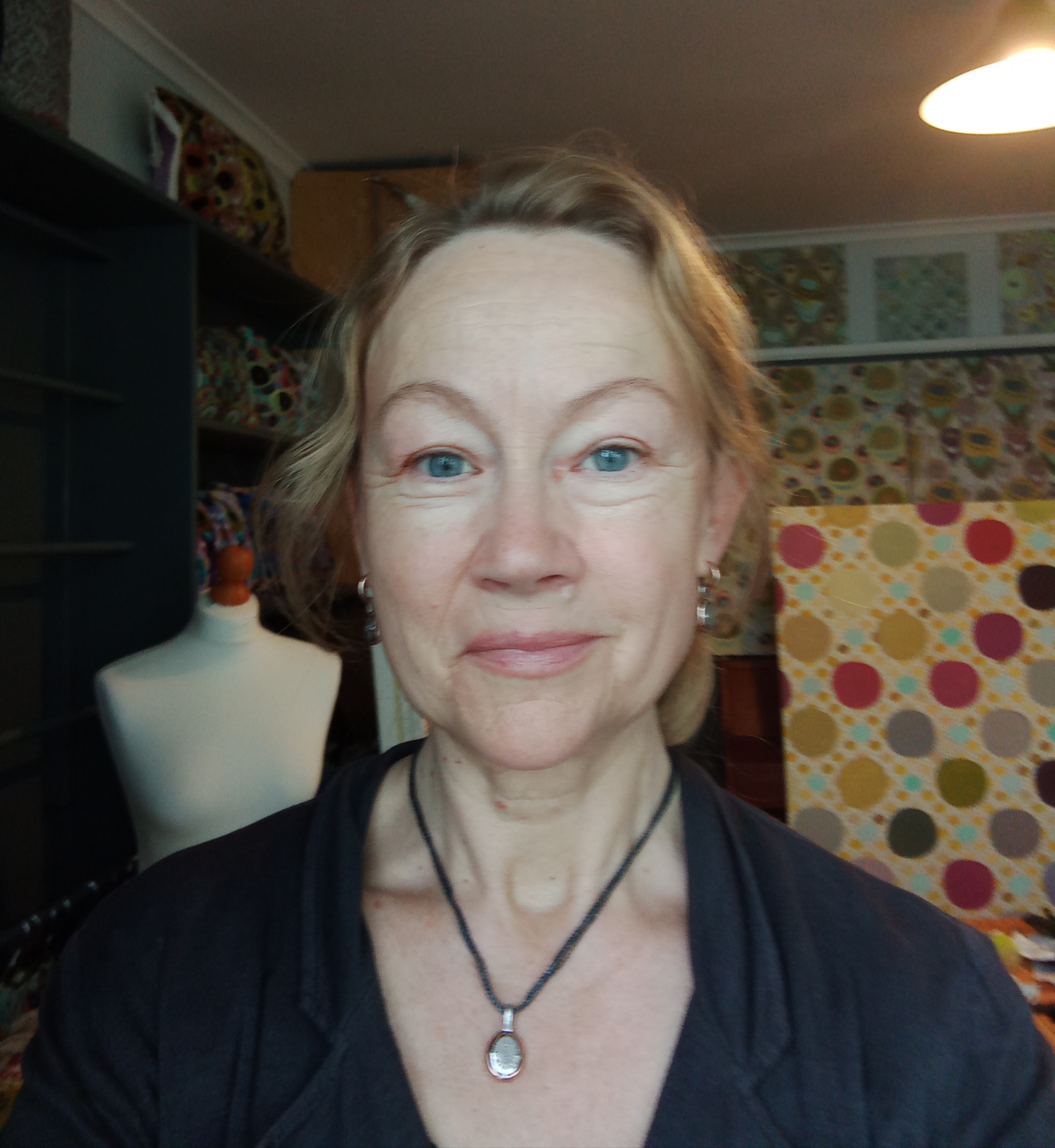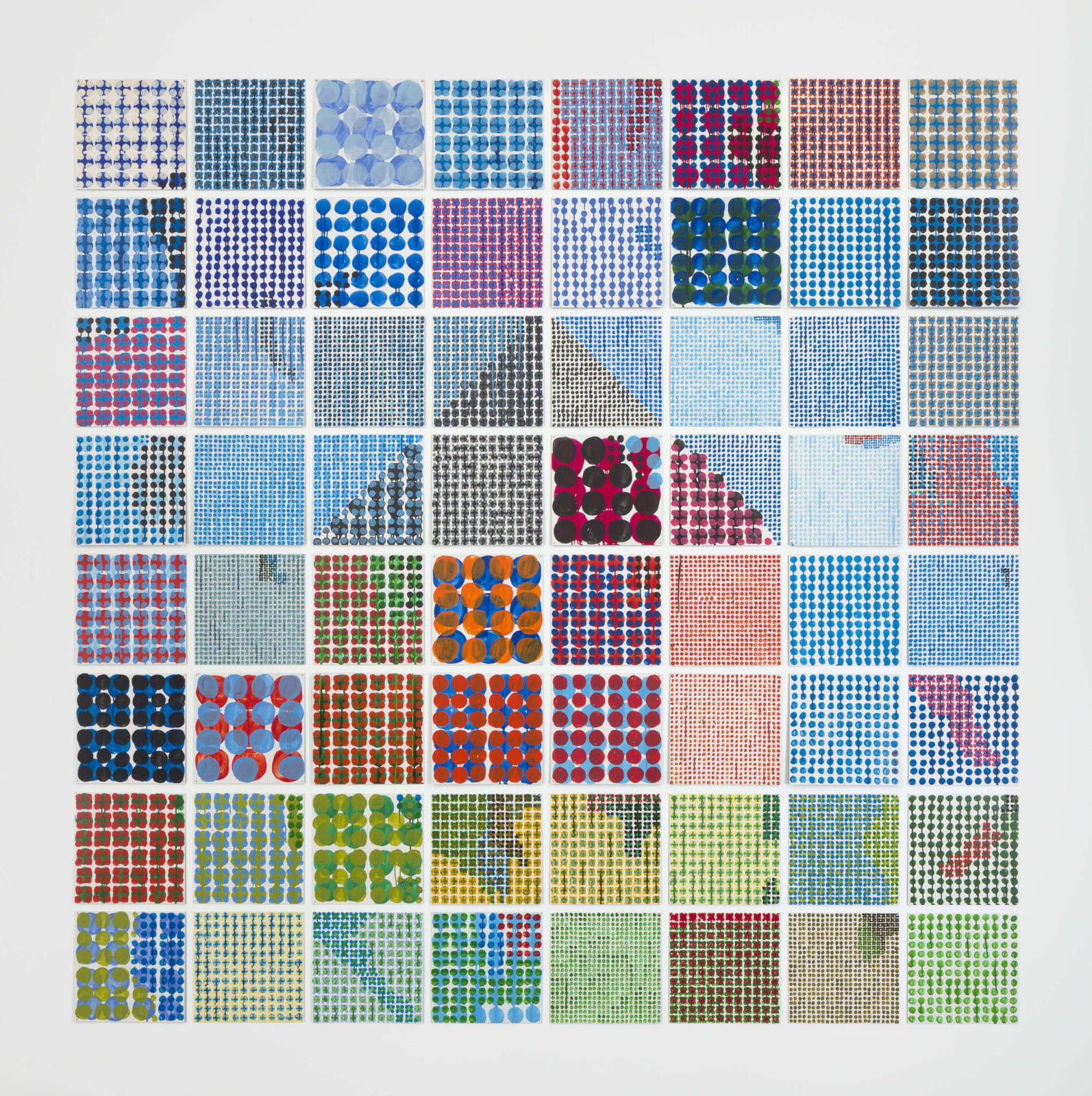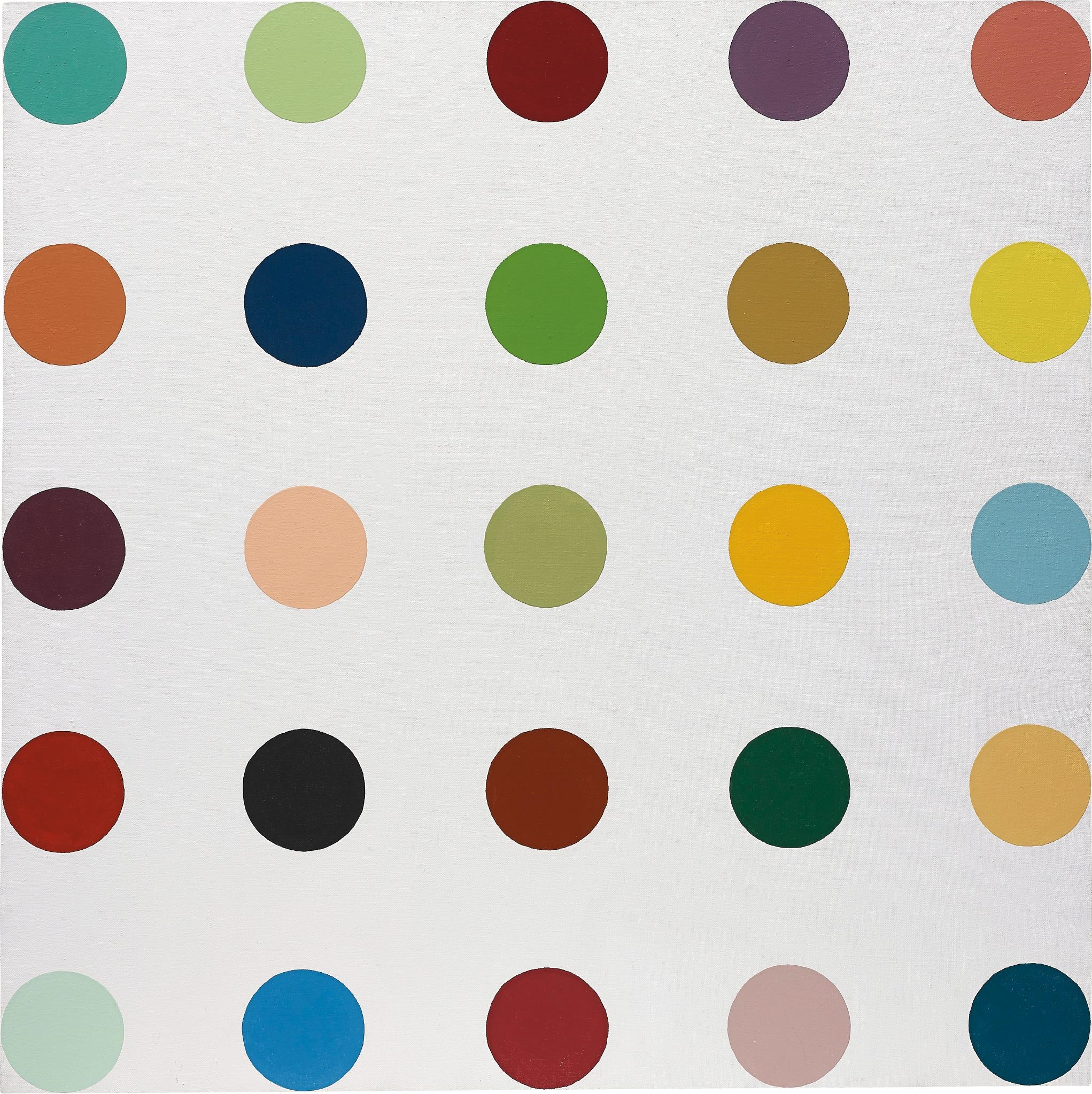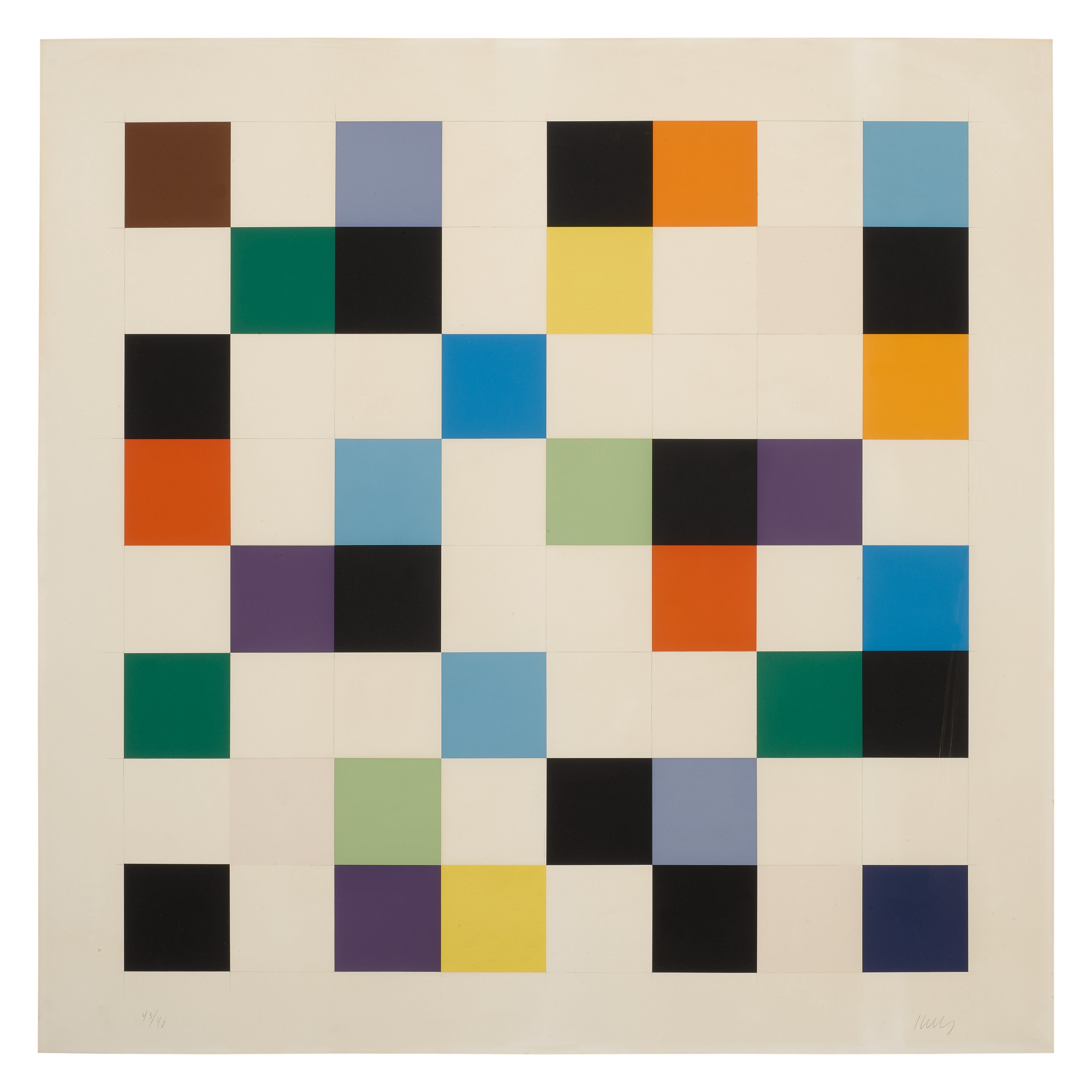From left Bartlett 1998, Hirst 1992, Kelly 1976
Inspirations & Creative Process
Many artists, particularly since the 1950's, have used rules for painting rather than relying on observation and intuition alone. Hard-edged paintings, with the focus on colour and composition, have been argued to be more immanent and less transcendent than colour field paintings (Rothko). Its more artisan than art perhaps, more Minimalist, Constructionist or Bauhaus. Artists such as Ellsworth Kelly (1951) Damien Hirst (1988), Sol Lewitt (1971), Gerhard Richter (1971) and Jennifer Bartlett (1973) all used rules to produce their work.
Ellsworth Kelly
For example, Ellsworth Kelly's Colors for a Large Wall (1951) involved the application of a mathematical system of rules to distribute the ready-made sticky backed paper colour squares in a grid. Each of the eight collages used a different process but here is one example of the rules he applied.
RULES:
Slips of paper were randomly numbered 1 - 18
Each slip was referred to 1 of 18 colours
A 40 inches by 40 inches 18 squared grid was created
The number on the randomly selected slip of paper was applied to the grid
The 18 different colours were placed on a grid according to their coded number.
Gerhard Richter
Gerhard Richter's Venice Biennale submission '180 Colours' (1971) was likewise created through a series of rules. Richter said that he 'found it interesting to tie chance into a totally rigid order' (MOMA, Colour Chart, 2008, p.91)
RULES:
Each of the 3 primary colours was mixed twice
The consequential 12 colours were graduated 12 times in a lighter direction and 7 times in a darker direction
The resulting 180 colours were painted onto the same sized squares
Each square was randomly numbered on the back as a number between 1 & 180 was drawn out of a box
The 180 numbered squares were arranged in a grid in consecutive numerical order
Jennifer Bartlett
Monumental plate painting by Jennifer Bartlett, Song spans 97 feet and is comprised of three sizes of enamelled metal plates, arranged in a repeated, stepped grid. Song creates a panorama reminiscent of Bartlett’s epic plate piece, Rhapsody (1975-76). In Song, Bartlett uses a basic black dot as a springboard to explore various compositional themes, employing the dot like notes in a melody. Bartlett is known for her installations of enamelled steel plates that blend conceptualism with painterly form. It is the work from this era that established the artist’s visual vocabulary of grids, dots, and pattern, as it does a pictorial home, executed with exacting precision. Each square divided into a grid then dots painted according to the following sequence of rules.
RULES
Dot-space-dot
dot-dot-space-dot-dot-space
dot-dot-dot-space-dot-dot-dot-space
etc, etc
Damien Hirst
Damien Hirst used a series of rules to paint his spots whose titles all come from an industrial chemistry manual.
RULES
Colour placement must be absolutely random
No colour can occur more than once
Size of gaps must equal size of spots
Paintings must end at edge of spot, mid point of spot, or in gap
My Process
To create my own designs, I use a series of arbitrary rules borrowed from psychoanalytical ideas on how we might visually comprehend relational difference & connection. I layer linear edged motifs according to these psychoanalytically derived rules.
As someone interested in both art and ideas, I'm convinced that 'thinking' and the 'aesthetic' are in continual oscillation, and deeply entangled with each other rather than sitting apart as binary oppositions. I have a particular interest in the way colour and a complex layering of 'linear' (Heinrich Wolfflin)
edged motifs set on a repeating grid-based design, might create a visual-theoretical 'Matrix' (Bracha Ettinger) producing a moving series of differentiating interconnections. Constructed around the notion of 'non-composition' (Yves-Alain Bois) such designs, I feel, allow the eye to create a (limited) series of visual relational 'events' (Giles Deleuze) through various qualities of formal difference and connection.
I'm now using various traditional textile techniques (avoiding 'monumental' mediums) such as woven tapestry, embroidery, knitting, and applique in addition to digital printing on velvet and silk to recreate the resulting grid-based designs.



